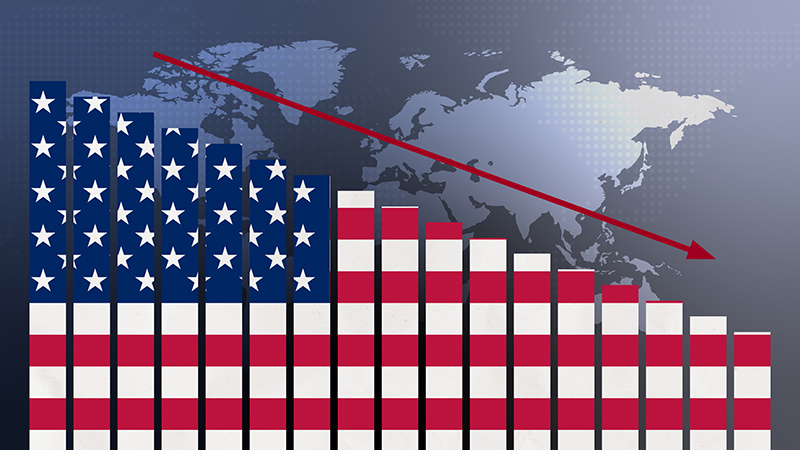By Julian Howard, lead investment director of multi-asset solutions at GAM Investments
Treasury yields reflect the sum of long-term growth and inflation expectations, so changes in these expectations affect their yields and pricing. This gives them a steady quality, unless expectations change suddenly or there are worries about the US government’s ability to repay its debt—such as the Great Bond Massacre, when the Clinton administration and Congress were forced to make a more visible effort to contain the deficit.
Between 15 October 1993 and 4 November 1994, 10-year US Treasuries shed 13.1% as concerns mounted about federal spending.
More recently, the bond market has repeated history. From July 2020 to October last year, US Treasuries shed a remarkable 25.6% amid higher post-pandemic inflation expectations and renewed deficit concerns. While these episodes demonstrate how US Treasuries can occasionally be volatile, they also present an opportunity to buy into an otherwise steady asset class at compelling valuations.
Appealing valuations
US Treasuries are cheap relative to their recent history. Taking an equity valuation approach in which the ‘price’ of the 10-year US Treasury is 100 and ‘earnings’ is the current yield to maturity (4.1%), we get a synthetic price-to-earnings valuation of 24.4 times. This compares well with the inflated valuation of nearly 200 times when yields plunged below 1% during the growth shock of the global pandemic in 2020.
While today’s valuation is richer than the S&P 500’s forward price-to-earnings ratio of 22.5 times, US Treasuries are virtually guaranteed to receive back their ‘100’ on maturity. Equities provide no such reassurance.
In the case of longer-dated US Treasuries, disinflation would pull down yields and raise prices. US headline inflation eased off to a 3.4% year-on-year level at the end of December from its 9.1% peak in June 2022. Goods inflation is lower as supply chains have eased and while the labour market remains tight, tentative signs of loosening can be seen. Increases in the supply of workers have contributed to softening wage growth, with average hourly wages up 4.1% in December on the previous year compared with 5% at the end of 2021.
Subdued growth supports bonds
Taken together, the case for falling bond yields from both an inflation and growth perspective is robust. US GDP peaked at a 4.9% annualised rate in the third quarter of 2023, driven in large part by the one-off factor of pandemic stimulus cheques.
According to the Boston Federal Reserve, $340bn of excess savings remain in the hands of consumers but should be mostly spent by the second half of 2024, so growth should therefore cool.
Profound secular forces, including wealth inequality, shrinking labour markets and climate change, look set to weigh heavily on the real rate (growth) component of bond yields.
See also: Lindsell Train, Invesco and Schroders managers join 2024 FE Alpha Manager list
A solid position in multi-asset portfolios
US Treasuries offer a near-term portfolio construction benefit. Since the US has never defaulted on its Treasury notes, this has lent government paper the unique characteristic of nearly always holding value during times of distress. This crash protection is often a more reliable cushion than many other asset classes found in portfolios.
Stocks can be notoriously volatile amid uncertainty, yet investment grade or high-yield bonds can be adversely affected by rising corporate default rates if growth cools—giving them an intrinsic correlation to stocks. Reliable diversification properties of longer-dated US Treasuries mean there should always be a place for them in multi-asset portfolios. This might not be as much as the 40% implied by the classic 60:40 portfolio, but neither should it be nothing.
Risks of inflation remain
The latest US 3.4% inflation print demonstrated how hard the final mile will be in the journey back to pre-pandemic yields. Although goods prices have eased, services have been persistently strong.
Even housing rose in 2023 amid single-family dwellings shortages. Inflationary expectations could therefore rise again, although the post-pandemic trajectory of gradual disinflation reflects the end of a once-in-a-century traumatic episode.
Furthermore, the Fed is offloading bonds via quantitative tightening, putting downward pressure on their prices – and upward pressure on yields – as supply increases. However, better US Treasury valuations give bondholders a cushion.
Nevertheless, the portfolio airbag effect of US Treasuries remains undiminished. This makes an asset class often seen as dull more interesting today.
See also: UK employment growth slows in 2023 but wages outpace inflation











